The Cost Of Advertising On YouTube
- June 1, 2020

Why you should advertise on YouTube
YouTube is the 2nd most popular search engine after google and people increasingly prefer watching videos rather than reading content. About 1/3rd of the entire population on the internet uses YouTube.
YouTube allows you to advertise to a specific target audience based on demographics like age, gender, interests, and specific genre of channels. A lot of researches shows that YouTube ads often generate a higher return on investment than television ads.
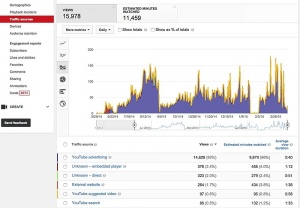
The reports you receive after creating a YouTube advertisement are detailed and provide information about who interacted with your ad, their preferences about your content. You can link it with google analytics and ads for in-depth analysis. To understand the cost of advertising on YouTube, let’s first understand different types of ads that you can create with YouTube.
Different types of YouTube ads:
As you’d expect, there are several different types of YouTube ads – based on the placement they offer on the page, the timing of the display, and your goals. When you start setting up a YouTube campaign, the system gives you recommendations for different advertisement types that are best suited for you. To give you a better idea, all of them, with their benefits, are listed below:
- Display ads
These ads find a placement on the desktop version, on the top right column of video suggestions. This is generally used when you want to generate brand awareness and reach a wide audience. The ad size and format plays a huge role in this type. It works best if you have some static content and not just the animated one for this type.You can choose your display ad to be shown only to a specific range of keywords. To get started, google offers you a range of categories that you can pick from or exclude from based on your target and budget.
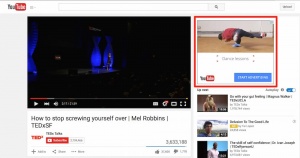
- Overlay ads
These ads are the ones that appear above the video being streamed. These ads give a small rectangular space that covers the lower 20% of the video. Users have a higher chance of engaging with these ads since it is simultaneously visible with the video being streamed.
These ads must be relevant for a person to engage with it and click on it. They are mostly used to drive clicks on your landing page. Minimal content, engaging CTA, and creative picture/animation works best in enticing a user to click on your ad.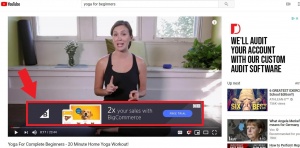
- Skippable video ads
These are the most common ads that you see before watching a video. They are the ones that can be skipped after watching for 5 or 6 seconds. These are also the most versatile and relatively risk-free. You can create an ad about myriad topics from ‘how to’ videos, stories, demos, testimonials, and much more.
Although 84% of people generally skip the ads, 22% of them remember what they saw if they find it humorous or engaging emotionally. And you only have to pay for those who have watched the ad for 30 seconds or more.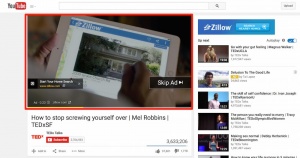
- Non-Skippable video ads
As the name suggests, these are the ads that can’t be skipped and must be watched before viewing the main video. They can be placed before, in the middle, or after a video. The preferred length of these videos is between 15 – 30 secs.These ads work great for brand exposure and are usually bought based on cost per certain number of impressions instead of via bidding or auction. This ensures security against spending more than necessary, but the skill lies in targeting the desired audience.
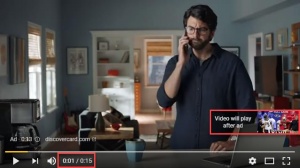
- Bumper ads
These ads can’t be skipped either and must be finished streaming before continuing to the main video. Since these last for 6 seconds at max, they cut down the annoying factor of ‘non-skippable’ videos but serve to reinforce the image of your brand. They are usually used alongside different ad types for 6 seconds is all you get.These work best for the audience with a lower attention span, especially the mobile users who quickly browse through numerous videos. Since the budget for bumper ads is relatively low, it can reach a wider audience. The payment for these ads can also be done based on CPM (cost per 1000 impressions)
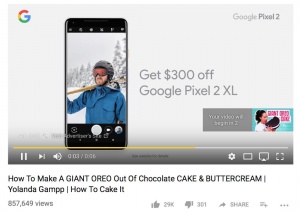
- Sponsored Cards
This is the most recently launched ad format of YouTube wherein it allows the display of products or content that is relevant to your video or are featured in them. It is like a teaser card which is shown on the desktop as well as the mobile version for a few seconds, allowing the viewer to click on it. For this type of advertising, you do not have to sweat much, YouTube will itself enable cards on monetized videos.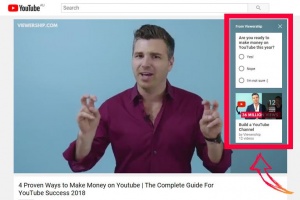
When do you pay for an ad on YouTube?
There is no definitive predetermined amount for using YouTube ads. Just like Google AdWords, advertising on the YouTube search engine involves bidding. Generally, the ads have an average cost of $0.010 – $0.030 per view. The amount you set as a cost per view bid, lets the system know how much you are willing to pay for a view or an interaction. You will be only charged the minimum amount it takes to place your ad above your competitors. The ad rank depends on several factors like your bid, the quality of your video, it’s relevance, location, time, and much more.
Just because you’re displaying your ad to someone doesn’t necessarily mean that you are paying for it. The exact cost for your advertisement on YouTube also depends upon the type of advertisement you choose, the audience you are targeting, and your campaign goals. The cost is based on whether you pay for a click or a view. A view, as previously mentioned, is often considered to be at least 30 seconds (unless the video is shorter). If the video is shorter, you are charged only when someone views the entire advertisement.
In the case of ad formats like display ads, you are charged whenever someone clicks on your advertisement. There are also options for mobile-only display if you wish to only target people who use a mobile device.
Other ad formats like the bumper ads and the non- skippable video ads are charged based on a unit called ‘CPM’ (cost per mille). By this format, you pay a certain predetermined amount when your ad has made 1000 impressions. An average CPM is generally around $7.50. It’s also important that you look at the revenue you generate in return for the amount invested. YouTube takes a whopping 45% of the revenue generated, so the amount you are left with is quite minimal if you don’t earn enough out of it.
In general, The average cost of reaching 100,000 viewers is around $2,000. Most advertisers allow at least $10 per day for their YouTube advertising campaigns, and then raise this once they have experimented with various options. Although the cost of creating a YouTube advertisement is increasing, the returns that can be generated from it are massive.
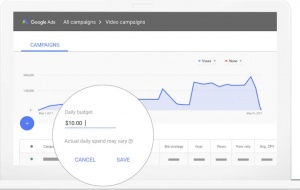
But Remember …
The most essential part of creating a YouTube ad is in identifying and narrowing down a target audience. Trial and error can always be relied upon but ensure that you do it smartly and not end up wasting your money in creating campaigns for videos that are not shot with high quality and a clear message. Create an engaging visual, uplifting audio, and relevant text to cohesively entice the user and make a purchase.
There are chances that people may not instantly engage with your advertisement or subscribe to your channel if they see your ad only once. So, ensure you have ample budget and resources before you begin. Once you are ready, all you need to do is click on the ‘advertise’ option in the footer of the YouTube page and they shall guide you through the process of creating an advertisement.









